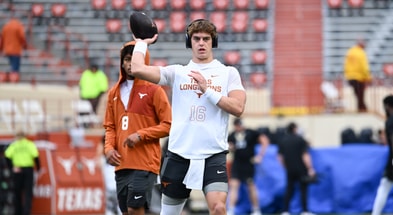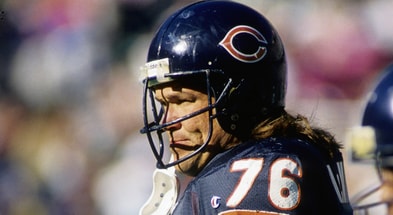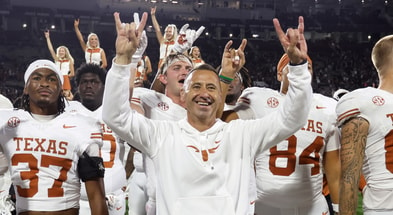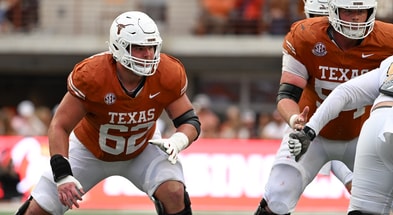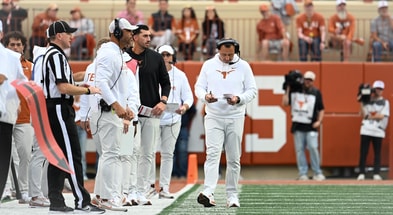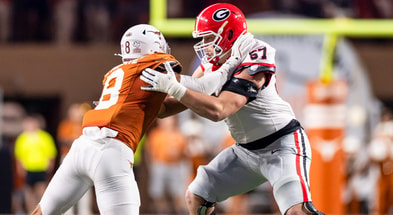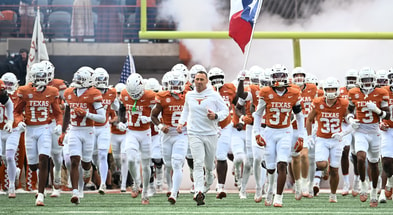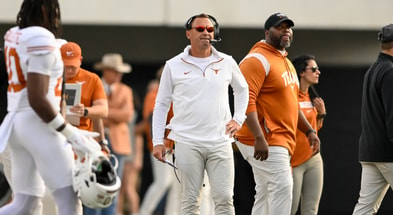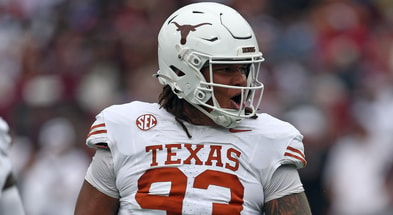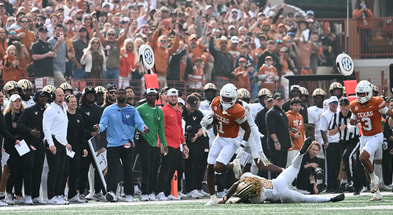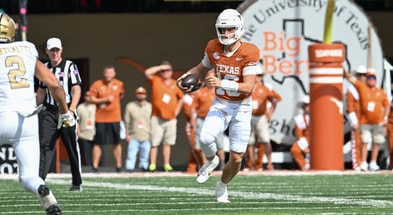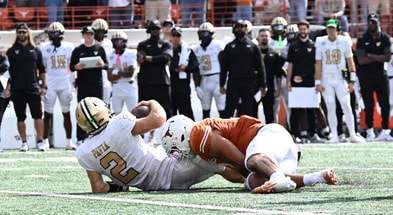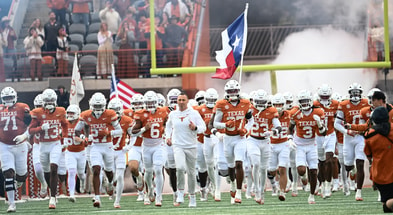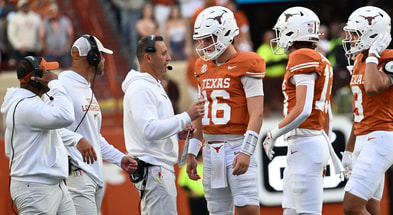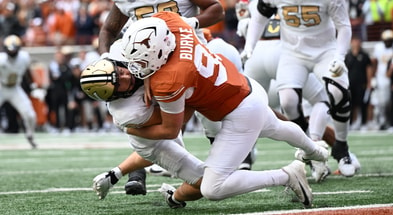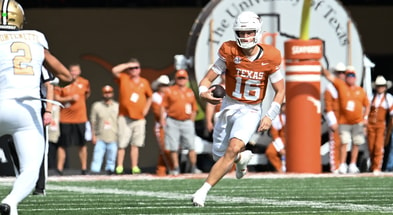Texas Memorial Stadium, home of the Longhorns, turns 100 years old

One-hundred years ago today, the first football game was played inside what’s now considered a cathedral of college football. Texas Memorial Stadium replaced Clark Field as the home of the Texas Longhorns football program on November 8, 1924. Months of planning, construction, and bureaucracy laid the literal and figurative foundation for the building that for a century has been home to countless wins and some of the best the sport has seen.
[Join Inside Texas TODAY with code HOOKEM and get 50% off annual memberships!]
Texas Memorial Stadium opened for the Longhorns’ game against the Baylor Bears, a Southwest Conference rivalry at the time. This game was just two weeks after the Longhorns hosted Florida at Clark Field and played the Gators to a 7-7 tie in the last game at the previous home field for the varsity team.
Unfortunately, the first game was a memorable one for the wrong reasons. Texas lost to the Bears 28-10. Baylor went on to win the SWC that season as the only team in the league with more than two conference wins. Luckily for Texas, the game where the stadium was dedicated to the 198,520 Texans who fought in World War I and the 5,280 who gave their lives was a more celebratory affair for the Horns. Texas defeated the Agricultural and Mechanical College of Texas 7-0 to give the Longhorns their first two-game winning streak over the Aggies since the UT won three straight between 1907 and 1908 (the latter being a year the teams played twice).
Countless moments, memories, heartbreaks, and characters have walked the sidelines of Texas Memorial Stadium. The 1930s saw Clyde Littlefield lead the way before eventually the reins were handed over to the same Dana X. Bible Texas defeated during the stadium’s dedication game. Bible’s run set up Blair Cherry to continue the strength of the Longhorn football program in the 1940s, a strength that resulted in the seating capacity increasing to over 60,000. Cherry handed the keys over to Ed Price, who after the worst season in program history in 1956 was let go.
Next up? Darrell Royal.
Royal led the Longhorns to three national titles and a dominating run throughout the 1960s and 1970s, leading Texas to a place among the nationally elite. Texas expanded the stadium, added a track, and built an upper deck in the 1970s. Built into the side of the stadium was Bellmont Hall, a home to classrooms and athletic department offices.
The year 1977 saw a decent bit of upheaval. It was the first season without Royal on the sideline, and also the first season with the stadium dedicated to veterans of all wars and not just WWI. But it also saw one of the absolute legends of college football make his mark at Texas and on the sport, with Earl Campbell bringing home the program’s first Heisman Trophy.
The 1980s saw the end of the Fred Akers era plus the up and down tenure of David McWilliams. The burnt orange swoon continued in the 1990s, but more changes were made to the stadium with the removal of the track, the addition of the east upper deck, and the renaming of the stadium to “Darrell K Royal-Texas Memorial Stadium” in 1996. That coincided with the Longhorns first season in the Big 12.
Even with the addition of Royal’s name, evidence of the continued reverence given to service members is visible both inside the stadium and on its exterior. The original entablature honoring the Texans who died serving in World War I sits just outside the stadium’s northwest corner under flags for all the military branches. Plaques honoring soldiers from each college in the Southwest Conference who fell fighting line the north exterior of the stadium. A remade entablature is visible just below one of the north end zone clubs.
The field was named after major donor Joe Jamail in 1997, then one of the current namesakes of the playing surface in Ricky Williams won his Heisman one season later. Williams set the all-time NCAA rushing record during the Longhorns’ end-of-season upset over A&M on his way to the program’s second Heisman as the lasting image of the stadium from the 1990s.
Top 10
- 1New
YouTube TV, ESPN dispute
Google blasts ABC
- 2
College Football Playoff
Teams that remain in the hunt
- 3Hot
BCS Formula
Predicts first CFP Top 25
- 4
CFP Top 25 predictions
Projecting first rankings
- 5Trending
Auburn Hot Board
Top candidates to replace Freeze
Get the Daily On3 Newsletter in your inbox every morning
By clicking "Subscribe to Newsletter", I agree to On3's Privacy Notice, Terms, and use of my personal information described therein.
The 2000s brought to Austin another heyday under Mack Brown and more expansion, with an upper deck added to a renovated north end zone to expand the stadium to well over 90,000. The south end zone’s Godzillatron was added around the same time. During those halcyon years, the Longhorns won the 2005 national title and Big 12 championships in 2005 and 2009 thanks to a tremendous run of quarterback play featuring Vince Young and Colt McCoy
The lost years of the 2010s still brought with them a momentous change at the end of the decade, with a south end zone expansion that upgraded the player facilities and created new seating areas opening in 2021.
Those changes have created the opportunities for the largest crowds in stadium history, right on time for the program as it goes through its first season in the Southeastern Conference. Texas saw 105,215 pass through the gates against Georgia earlier this season, breaking the previous attendance record of 105,213 set against Alabama in 2022. Most of the top attended games of all time have occurred during the Steve Sarkisian era, and Sarkisian explained Thursday he’s cognizant of the legends who have walked within Darrell K Royal-Texas Memorial Stadium every Saturday.
“When you have a program like ours, University of Texas, you think about the great teams, the great players, the great coaches that have competed in the middle of that field, that have walked those sidelines,” Sarkisian said Thursday. “That’s kind of what I do every Saturday when I show up to games. I don’t know if you all know, but I go for a walk, and it’s just to kind of get myself to be where my feet are.”
Saturday will be a full-circle event of sorts. One-hundred years after Florida played the last game at Clark Field, the Gators will be the first team to open the second century of play at Darrell K Royal-Texas Memorial Stadium. Keeping up with the century theme, over 100,000 are expected to enter the stadium, now the ninth largest in the world and the seventh largest in the United States.
[Subscribe to the Inside Texas YouTube channel!]
If the next 100 years are anything like the previous century for Darrell K Royal-Texas Memorial Stadium, a lot of college football history is set to occur in the home of the Longhorns before the calendar turns to 2124.

